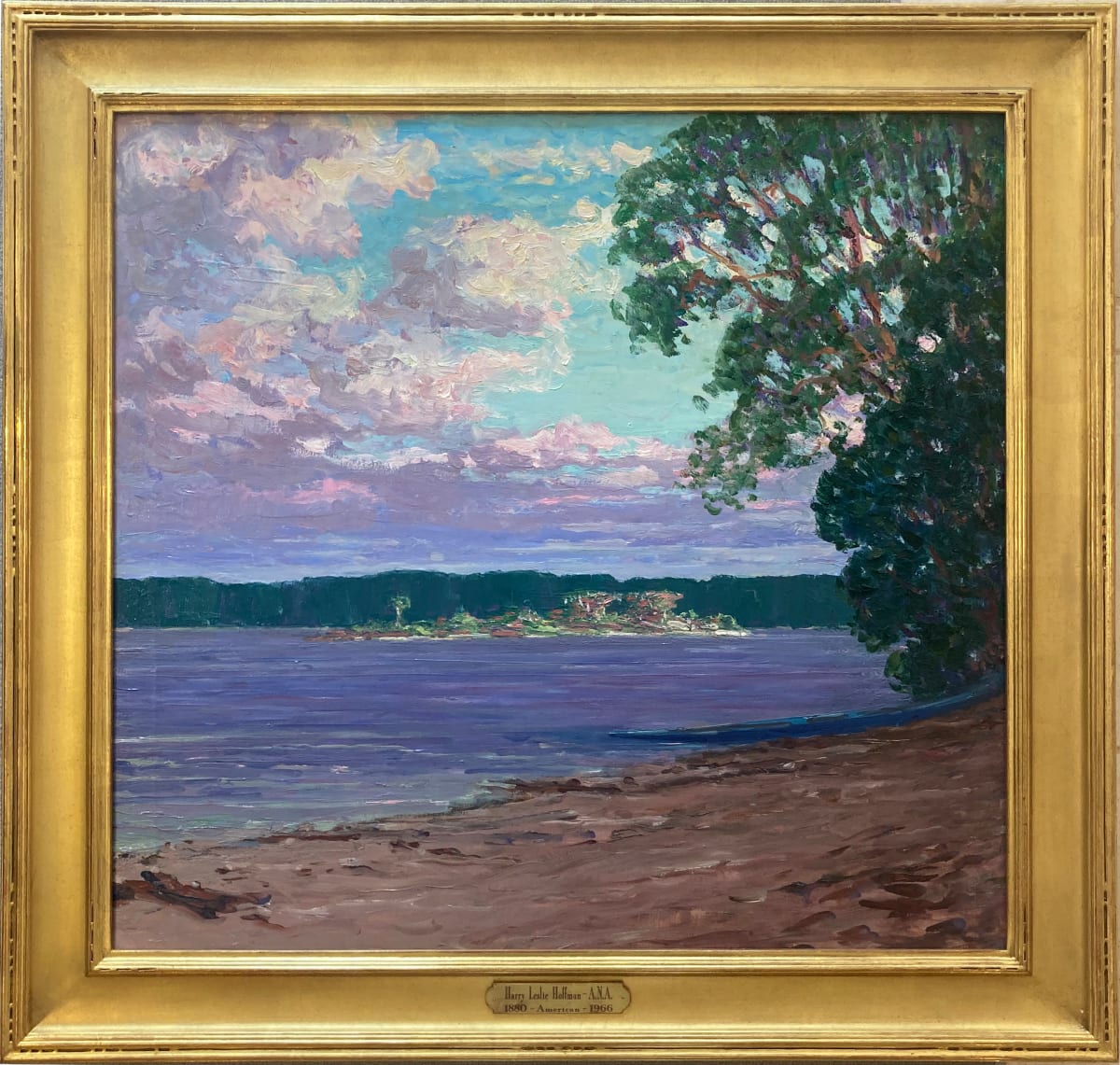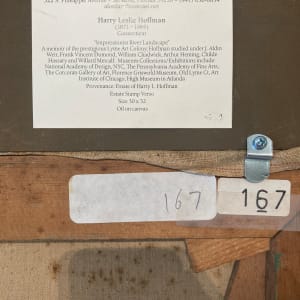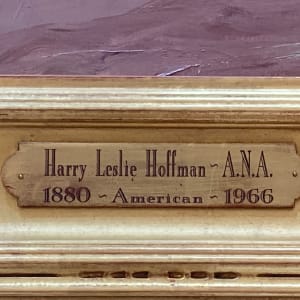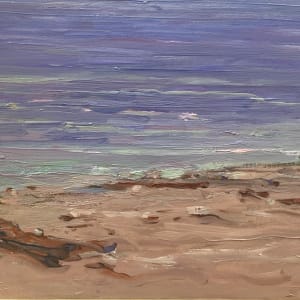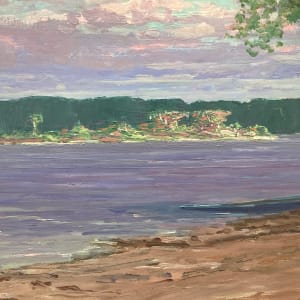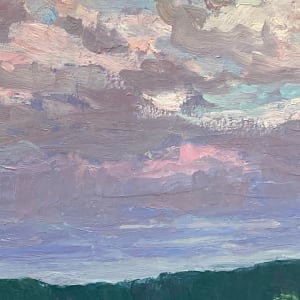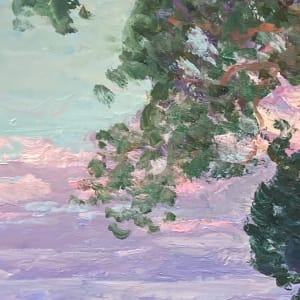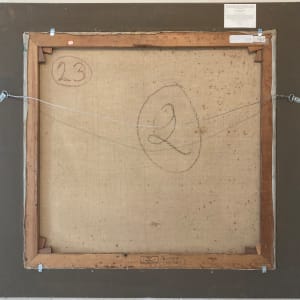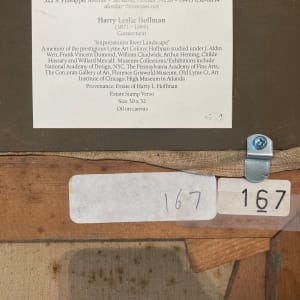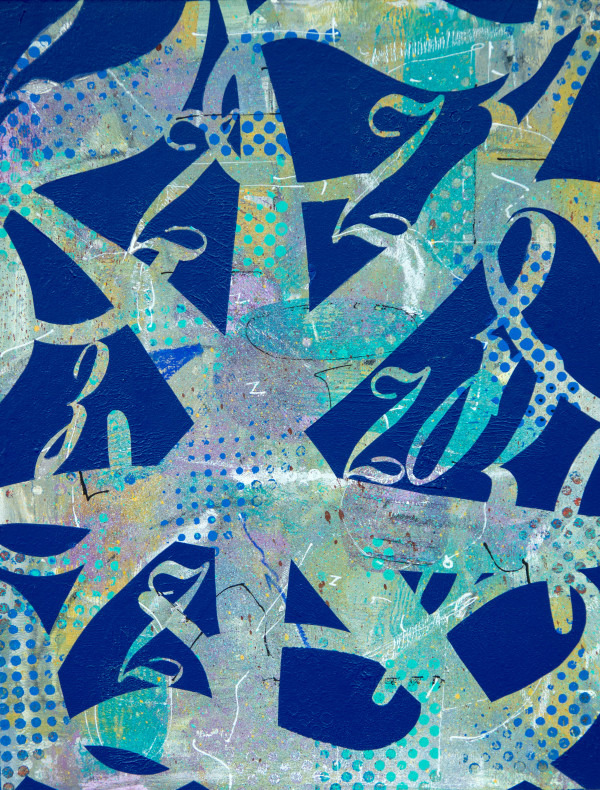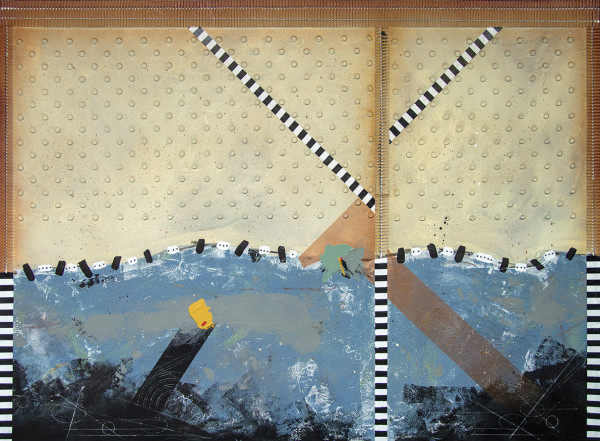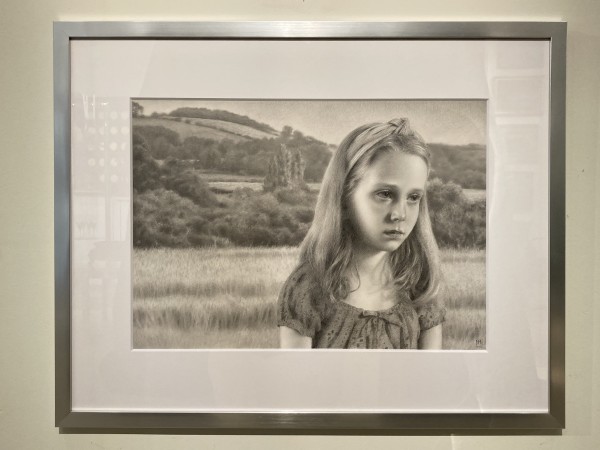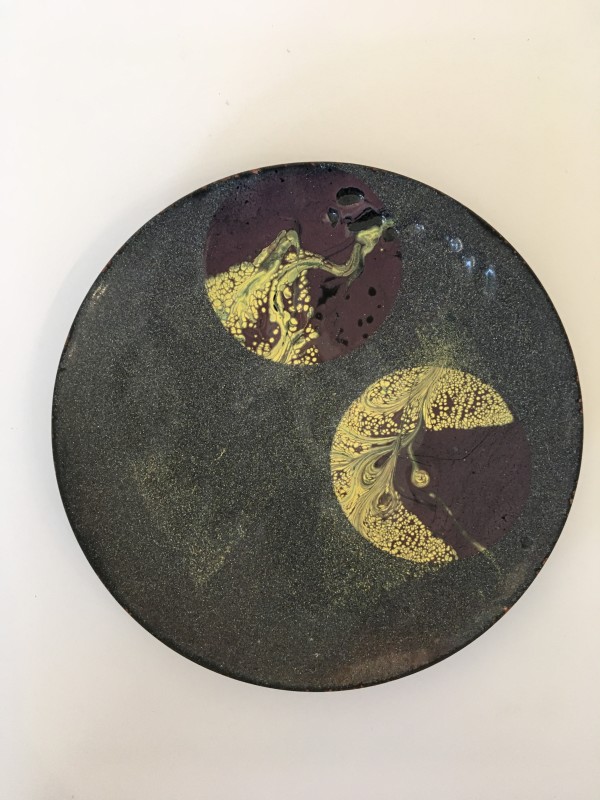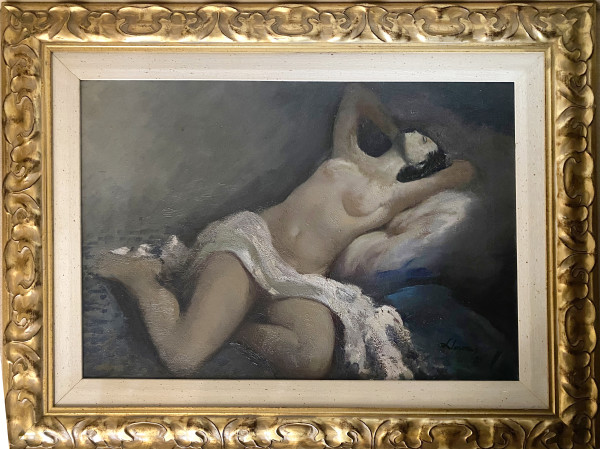- Harry L. Hoffman
- Early Morning River Landscape
- Oil on Canvas
- 30 x 32 x 0.75 in (76.2 x 81.28 x 1.91 cm)
- Framed: 36 x 38 x 4 in (91.44 x 96.52 x 10.16 cm)
- Inv: FHH0001
- $8,500
'Early Morning River Landscape,' by Harry L. Hoffman, Oil on Canvas Painting
In this gilt wood framed oil on canvas waterscape, American Impressionist artist Harry Hoffman depicts the last moments of a morning sunrise over a river in predominant hues of lavender, purple, pink and blue. The sky is reflected in the water below with a sandy brown beach and large green tree in the foreground.
Harry Leslie Hoffman was born in Cressona, a small community in Pennsylvania’s Schuylkill Valley. His mother was an amateur artist who encouraged her son to pursue a career in the arts. In 1893, Hoffman entered the School of Art at Yale University and studied with John Ferguson Weir, the son of Robert Walter Weir. After graduation in 1897, Hoffman moved to New York to continue his studies at the Art Students League. He also traveled to Paris and took classes at the Académie Julien.
In the summer of 1902, Hoffman attended the Lyme Summer School of Art, in the town of Old Lyme on the Connecticut coast. The school was headed by Frank Vincent Dumond and was located in a boarding house owned by Florence Griswold. The school eventually grew into an artists’ colony and a center for American Impressionism. When Hoffman first arrived as a student, he was not permitted to stay in the house which was designated for the professional artists only. However, his outgoing personality soon won him many friends at the colony.
In 1905, Hoffman settled in Old Lyme and worked as a full member of the artist colony. He was particularly influenced by Willard Leroy Metcalf, an Impressionist also working in Old Lyme. Fellow artists later fondly recalled Hoffman’s antics at the Griswold house, which included playing the flute and banjo, tap-dancing, singing humorous songs, and performing magic tricks. In 1910, Hoffman married another Old Lyme artist named Beatrice Pope, and the couple had one child in 1921.
Hoffman and his wife often escaped New England during the harsh winter months. In the winters of 1914 and 1915 he traveled to Savannah, Georgia with fellow Old Lyme artist William Chadwick. Hoffman depicted urban genre scenes around the city and was inspired by the soft hazy light created by the tropical climate. Hoffman’s Savannah paintings feature loose, Impressionistic brushwork and vibrant, saturated colors. In 1916, he visited the Bahamas and became interested in seascapes and underwater scenes. During the early twenties, Hoffman accompanied renowned naturalist William Beebe as a staff artist on expeditions to the Galapagos Islands, British Guiana, and Bermuda.
Throughout his career, Hoffman was a member of numerous art associations and clubs including the Salmagundi Club, the National Arts Club, the New York Watercolor Club, and he was elected as an associate member of the National Academy of Design in 1930. He was awarded a gold medal at the Panama Pacific Exposition in 1915 and won the Eaton Prize, bestowed by the Lyme Art Association in 1924. His work is now located in private and permanent collections throughout the United States.
- Subject Matter: landscape
- Collections: Artworks for December 2022 Opening - Downstairs

